
Scholarly Literature
This is a database of scholarly literature that concentrates currently on natural and engineered selfish genetic elements (gene drives). The latest are shown here.
Disclaimer>
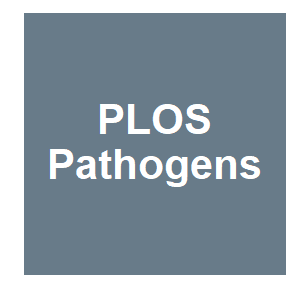
|
Broad dengue neutralization in mosquitoes expressing an engineered antibodyA. Buchman, S. Gamez, M. Li, I. Antoshechkin, H.-H. Li, H.-W. Wang, C.-H. Chen, M. J. Klein, J.-B. Duchemin, J. E. Crowe, Jr., P. N. Paradkar and O. S. Akbari, PLOS Pathogens, 16:e1008103. 2020.
Author summary With limited success of traditional vector control methods to curb dengue infections and more than half of the world’s population still at risk, there is a need for novel strategies to reduce its impact on public health. Recent advances in genetic technologies ... Keywords: Aedes aegypti, optimal control, wolbachia |

|
Development of a confinable gene drive system in the human disease vector Aedes aegyptiM. Li, T. Yang, N. P. Kandul, M. Bui, S. Gamez, R. Raban, J. Bennett, H. M. Sánchez C, G. C. Lanzaro, H. Schmidt, Y. Lee, J. M. Marshall and O. S. Akbari, eLife, 9:e51701. 2020.
Aedes aegypti is the principal mosquito vector for many arboviruses that increasingly infect millions of people every year. With an escalating burden of infections and the relative failure of traditional control methods, the development of innovative control measures has become ... Keywords: Aedes aegypti, optimal control, wolbachia |

|
The potential cost-effectiveness of controlling dengue in Indonesia using wMel Wolbachia released at scale: a modelling studyO. J. Brady, D. D. Kharisma, N. N. Wilastonegoro, K. M. Reilly, E. Hendricx, L. S. Bastos, L. Yakob and D. S. Shepard, medRxiv, 2020.01.11.20017186. 2020.
Wolbachia releases in high density urban areas is expected to be highly cost-effective and could potentially be the first cost saving intervention for dengue. Sites with strong public health infrastructure, fiscal capacity, and community support should be prioritized. Keywords: Aedes aegypti, optimal control, wolbachia |

|
Optimal control and analysis of a modified trojan Y-Chromosome strategyM. A. Beauregard, R. D. Parshad, S. Boon, H. Conaway, T. Griffin and J. J. Lyu, Ecological Modelling, 416. 2020.
The Trojan Y Chromosome (TYC) strategy is a promising eradication method that attempts to manipulate the female to male ratio to promote the reduction of the population of an invasive species. The manipulation stems from an introduction of sex-reversed males, called supermales, ... Keywords: Aedes aegypti, optimal control, wolbachia |
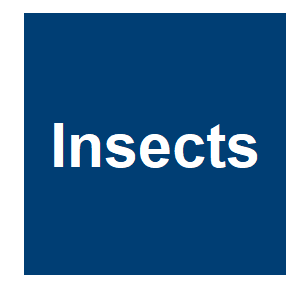
|
Antiviral effectors and gene drive strategies for mosquito population suppression or replacement to mitigate arbovirus transmission by Aedes aegyptiA. E. Williams, A. W. E. Franz, W. R. Reid and K. E. Olson, Insects, 11:1-18. 2020.
The mosquito vector Aedes aegypti transmits arthropod-borne viruses (arboviruses) of medical importance, including Zika, dengue, and yellow fever viruses. Controlling mosquito populations remains the method of choice to prevent disease transmission. Novel mosquito control ... Keywords: Aedes aegypti, optimal control, wolbachia |

|
Metaphor, Trust and Support for Non-native Species ControlP. A. Kohl, S. J. Collins and M. Eichholz, Environmental Communication, 14:672-685. 2020.
This experimental study used a representative sample of U.S. residents (N = 1,042) to test whether the use of the term "invasive" increases support for non-native species control efforts. The term invasive had a small influence on support for two out of three non-native species ... Keywords: Aedes aegypti, optimal control, wolbachia |

|
Wolbachia transinfections in Culex quinquefasciatus generate cytoplasmic incompatibilityT. H. Ant, C. Herd, F. Louis, A. B. Failloux and S. P. Sinkins, Insect Molecular Biology, 29:1-8. 2020.
Culex quinquefasciatus is an important mosquito vector of a number of viral and protozoan pathogens of humans and animals, and naturally carries the endosymbiont Wolbachia pipientis, strain wPip. Wolbachia are used in two distinct vector control strategies: firstly, population ... Keywords: Aedes aegypti, optimal control, wolbachia |
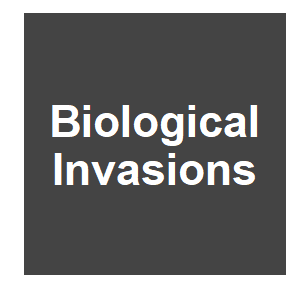
|
Scenario analysis on the use of rodenticides and sex-biasing gene drives for the removal of invasive house mice on islandsM. E. Serr, R. X. Valdez, K. S. Barnhill-Dilling, J. Godwin, T. Kuiken and M. Booker, Biological Invasions, 2020.
Since the 1960s conservation efforts have focused on recovering island biodiversity by eradicating invasive rodents. These eradication campaigns have led to considerable conservation gains, particularly for nesting seabirds. However, eradications are complex and lengthy endeavors ... Keywords: Aedes aegypti, optimal control, wolbachia |

|
Beyond Mendelian genetics: Anticipatory biomedical ethics and policy implications for the use of CRISPR together with gene drive in humans.M. W. Nestor and R. L. Wilson, Journal of Bioethical Inquiry, 2020:1-12. 2020.
Clustered regularly interspaced short palindromic repeats (CRISPR) genome editing has already reinvented the direction of genetic and stem cell research. For more complex diseases it allows scientists to simultaneously create multiple genetic changes to a single cell. ... Keywords: Aedes aegypti, optimal control, wolbachia |

|
Gene drives : equity demands civilityN. Kofler, Nature, 565:25. 2020.
At the 14th Conference of the Parties of the United Nations Convention on Biological Diversity late last year, I witnessed the rapid deterioration of a crucial discussion. It was on the potential of synthetic biology in environmental conservation. What started as heckling turned ... Keywords: Aedes aegypti, optimal control, wolbachia |

|
Technology Factsheet: Gene DrivesJ. Lunshof, C. Shachar, R. Edison, A. Jayanti, Belfer Center for Science and International Affairs, 2020.
Gene drives can be defined as genetic elements that pass from parents to unusually high numbers of their offspring due to biased inheritance (sometimes referred to as the possession of “selfish” genetic elements).1,2 There are different ways of achieving this biased ... Keywords: Aedes aegypti, optimal control, wolbachia |

|
A comparison of the Trojan Y Chromosome strategy to harvesting models for eradication of nonnative speciesJ. J. Lyu, P. J. Schofield, K. M. Reaver, M. Beauregard and R. D. Parshad, Natural Resource Modeling, 2019.
The Trojan Y Chromosome strategy (TYC) is a promising eradication method for biological control of nonnative species. The strategy works by manipulating the sex ratio of a population through the introduction of supermales that guarantee male offspring. In the current study, we ... Keywords: Aedes aegypti, optimal control, wolbachia |

|
A typology of community and stakeholder engagement based on documented examples in the field of novel vector controlC. E. Schairer, R. Taitingfong, O. S. Akbari and C. S. Bloss, PLoS Neglected Tropical Diseases, 13:e0007863. 2019.
Background Despite broad consensus on the importance of community and stakeholder engagement (CSE) for guiding the development, regulation, field testing, and deployment of emerging vector control technologies (such as genetically engineered insects), the types of activities ... Keywords: Aedes aegypti, optimal control, wolbachia |
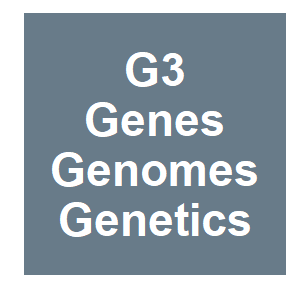
|
Assessment of a Split Homing Based Gene Drive for Efficient Knockout of Multiple GenesN. P. Kandul, J. Liu, A. Buchman, V. M. Gantz, E. Bier and O. S. Akbari, G3: Genes|Genomes|Genetics, 10:827-837. 2019.
Homing based gene drives (HGD) possess the potential to spread linked cargo genes into natural populations and are poised to revolutionize population control of animals. Given that host encoded genes have been identified that are important for pathogen transmission, targeting ... Keywords: Aedes aegypti, optimal control, wolbachia |

|
Biomphalaria glabrata Granulin Increases Resistance to Schistosoma mansoni Infection in Several Biomphalaria Species and Induces the Production of Reactive Oxygen Species by HaemocytesJ. R. Hambrook, A. A. Gharamah, E. A. Pila, S. Hussein and P. C. Hanington, Genes, 11:12. 2019.
In this study, we demonstrate that in vivo addition of Biomphalaria glabrata pro-granulin (BgGRN) can reduce Schistosoma mansoni infection success in numerous Biomphalaria sp. when challenged with different S. mansoni strains. We also demonstrate that cleavage of BgGRN into ... Keywords: Aedes aegypti, optimal control, wolbachia |
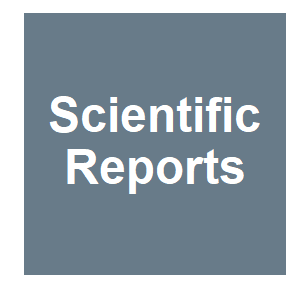
|
Mathematical modeling of self-contained CRISPR gene drive reversal systemsM. G. Heffel and G. C. Finnigan, Scientific Reports, 9:20050. 2019.
There is a critical need for further research into methods to control biological populations. Numerous challenges to agriculture, ecological systems, and human health could be mitigated by the targeted reduction and management of key species (e.g. pests, parasites, and vectors ... Keywords: Aedes aegypti, optimal control, wolbachia |

|
Experimental population modification of the malaria vector mosquito, Anopheles stephensiT. B. Pham, C. H. Phong, J. B. Bennett, K. Hwang, N. Jasinskiene, K. Parker, D. Stillinger, J. M. Marshall, R. Carballar-Lejarazú and A. A. James, PLOS Genetics, 15:e1008440. 2019.
The experimental introduction of manipulated genes into insect species has a long history in basic genetics. Recent advances in genome editing technologies have spurred considerable effort to exploit these methodologies to provide genetic solutions to some of the worst medical ... Keywords: Aedes aegypti, optimal control, wolbachia |
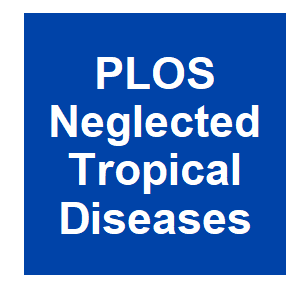
|
Gene drives for schistosomiasis transmission controlT. Maier, N. J. Wheeler, E. K. O. Namigai, J. Tycko, R. E. Grewelle, Y. Woldeamanuel, K. Klohe, J. Perez-Saez, S. H. Sokolow, G. A. De Leo, T. P. Yoshino, M. Zamanian and J. Reinhard-Rupp, PLoS Neglected Tropical Diseases, 13:e0007833. 2019.
Schistosomiasis is one of the most important and widespread neglected tropical diseases (NTD), with over 200 million people infected in more than 70 countries; the disease has nearly 800 million people at risk in endemic areas. Although mass drug administration is a ... Keywords: Aedes aegypti, optimal control, wolbachia |

|
Articulating ‘free, prior and informed consent’ (FPIC) for engineered gene drivesGeorge, D. R., T. Kuiken and J. A. Delborne, Proceedings of the Royal Society B: Biological Sciences, 286:20191484.. 2019.
Recent statements by United Nations bodies point to free, prior and informed consent (FPIC) as a potential requirement in the development of engineered gene drive applications. As a concept developed in the context of protecting Indigenous rights to self-determination in land ... Keywords: Aedes aegypti, optimal control, wolbachia |

|
Fitness consequences of a non-recombining sex-ratio drive chromosome can explain its prevalence in the wildDyer, K. A. and D. W. Hall, Proceedings of the Royal Society B: Biological Sciences, 286:20192529. 2019.
Understanding the pleiotropic consequences of gene drive systems on host fitness is essential to predict their spread through a host population. Here, we study sex-ratio (SR) X-chromosome drive in the fly Drosophila recens, where SR causes the death of Y-bearing sperm in male ... Keywords: Aedes aegypti, optimal control, wolbachia |

Contact
David O’Brochta
Foundation for the
National Institutes of Health
geneconvenevi@fnih.org
RSS

